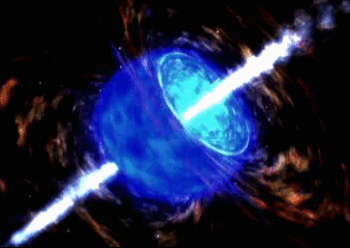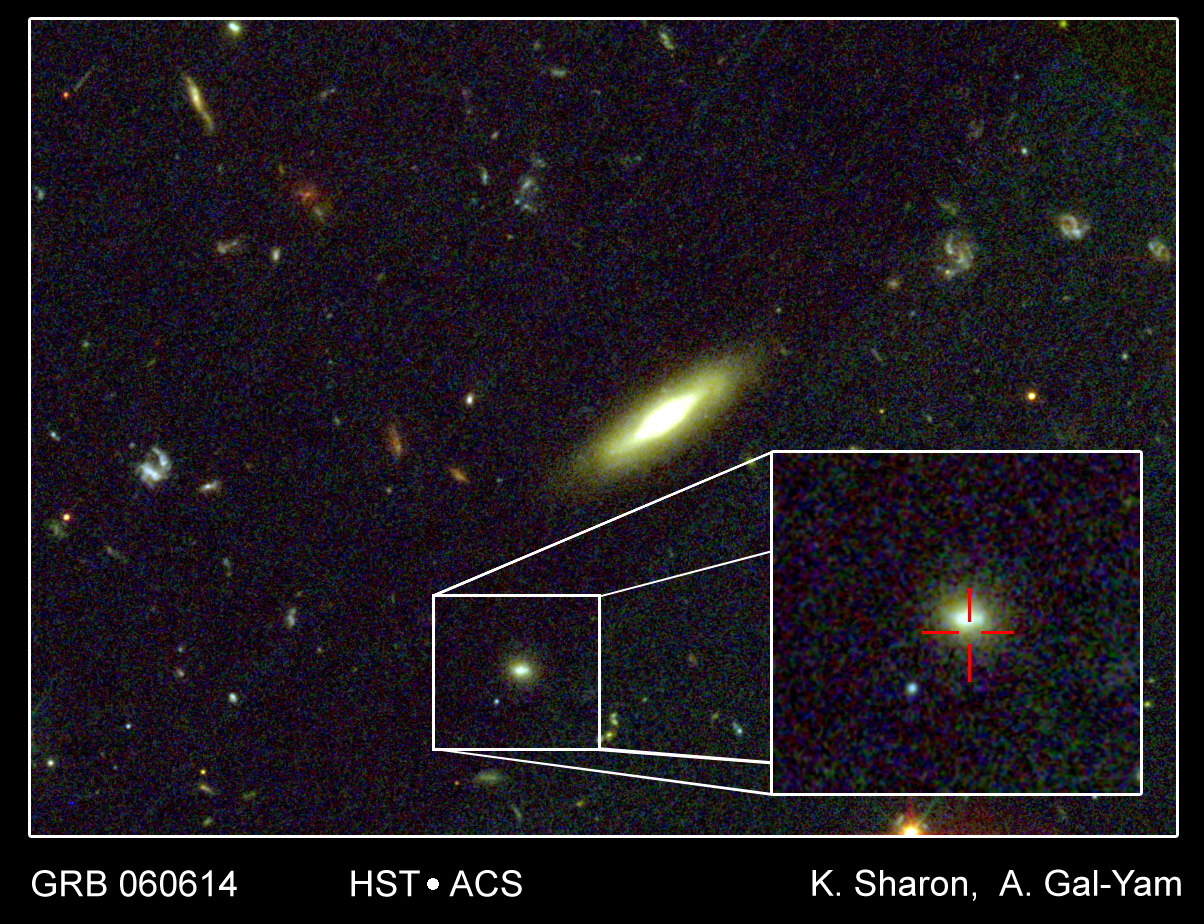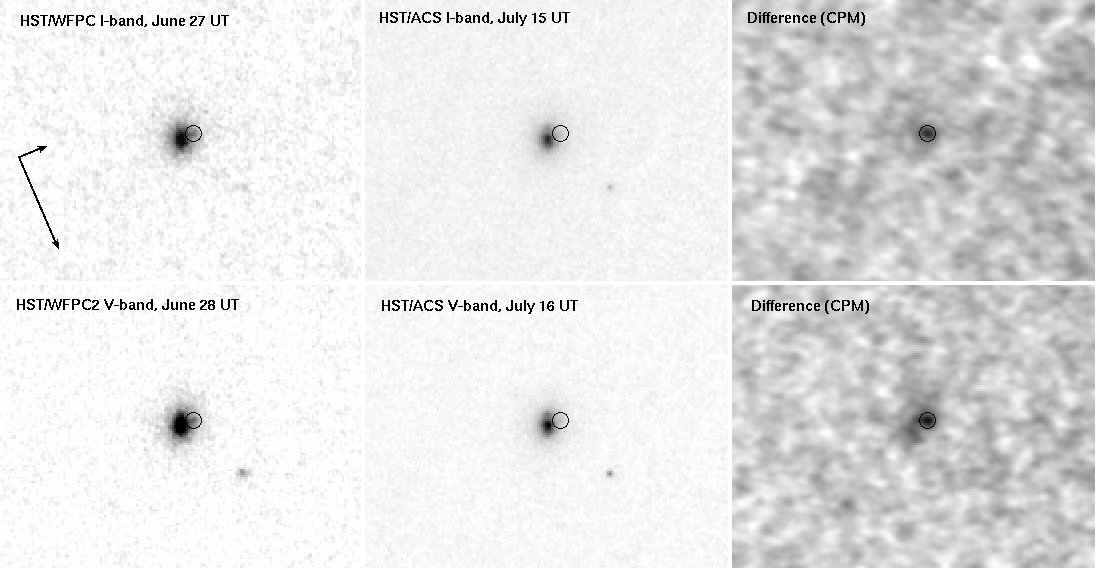
|
To further complicate the mystery, it turns out that there are two kinds of GRBs:
the long ones, which are usually longer than 2 seconds or so, and the short ones, which are,
as you'd guess, typically shorter than 2 seconds. During the last 8 years, accumulated evidence
indicated that the class of long GRBs (which are the more numerous) come from very massive stars
(each one many times more massive than our sun) which, at the end of their short lifetime
of but a few million years, explode
in a process called a supernova. A small fraction of these supernova explosions of massive stars
also make long GRBs.
|




